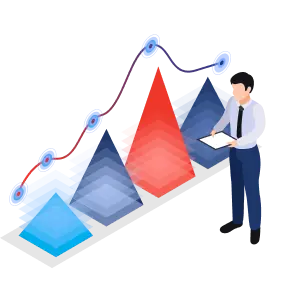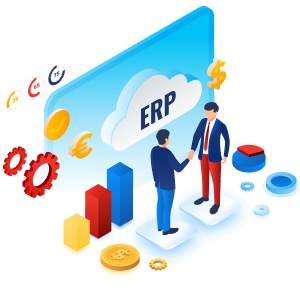
Fortify Business Data Protection with Acumatica Cloud ERP Security
As companies digitize operations, securing systems from cyber threats becomes imperative. Yet complex on-premise security infrastructure proves costly. This is where purpose-built cloud ERPs like Acumatica deliver integrated protection without the headache.
This guide explores how Acumatica’s layered security model safeguards sensitive information to mitigate risks - both within the software and via expert partners.
The following topics are covered in this discussion on enterprise security in Acumatica:
✅ Access and Permissions Safeguards
✅ Data Encryption and Validation
✅ Shared Responsibility plus Auditing
✅ Cybersecurity Tools and Monitoring
✅ Partner Protections and Certifications – A key component of security in Acumatica.
Explore how Acumatica's cloud ERP solution provides advanced cyber risk prevention so you can direct resources towards driving business growth.
Balancing Cloud Security, Usability and Affordability
It seems impossible for many leaders to transition business systems online without sacrificing security, but with an ERP system like Acumatica, it's more than possible. Perceived tradeoffs between usability, protection and TCO stall cloud adoption.
Acumatica’s specialized cloud design breaks this deadlock through embedded security provisions and partnerships that offload heavy lifting to experts. Acumatica's platform curbs vulnerability risks not with complex bolt-on tools but innately throughout its logical processes—the most underestimated advantage of a cloud ERP solution.

Access and Permissions - Controls Over Entry Points
Instead of blanket access, Acumatica allows granular permissions so users only interact with designated data needed for their roles via:
✓ Screen-Level Visibility Filters – Finance views in the ERP solution differ from warehouse-picking workflows.
✓ Entity Access Filters – In our cloud-based ERP, employees can access certain customer data while external accounts reference separate subsets.
✓ Field-Level Filters – Show/hide columns containing sensitive fields like SSN based on user context.
✓ Inquiry/Report Filters, implemented in our cloud-based ERP – further manage visibility into record details through confidentiality policies.
✓ Federated Identity – Single sign-on (SSO) with multifactor authentication (MFA) adds layered entry verification.
✓ Object-based permissions increase system security while optimizing interfaces for productivity based on user needs.
Data Security and Validation – Gatekeeper Guardrails
By applying end-to-end security measures in the Acumatica ERP solution, restricting access and fortifying data integrity also help prevent misuse and abuse.
✓ Automated Validation Checks – Any entry workflows trigger confirmation of values against standardized business logic.
✓ Encrypted Storage – In our ERP software, databases, backups, and data warehouses utilize high-grade AES 256 encryption for enhanced security.
✓ Whitelist Data Policies – Only permit inbound data flows from trusted applications and deny all else.
✓ Sandbox Testing Environments – Validate upgrades/fixes to avoid tampering with production data.
✓Change Audits and Alerts – Track modifications, access attempts and configuration alterations.
Thanks to Acumatica's ERP system, risks significantly decrease by ensuring the quality of datasets through rules-based checks and safeguarding beyond perimeter walls despite increased use.
Shared Management Secures Cloud ERP Environments
Most assume cloud security falls predominantly on vendors while on-premise burdens clients. Acumatica’s shared responsibility model balances workloads for cloud ERP protection. Providers like Acumatica handle physical infrastructure, networking, hardware, and environmental controls while visiting audited data centers, as security measures in 2024. Customers manage user access, logical security protections and daily activities through intuitive policies.
Ongoing staff cybersecurity training combined with provider expertise offer dual coverage across problem areas plaguing lone IT teams and minimum vendor protections alike.
Extending Cyber Risk Prevention Through Partnerships
All software contains vulnerabilities requiring ongoing vigilance – the key difference lies in response capabilities when issues surface.
This is where Acumatica partnerships add significant value to our cloud ERP solution:
➡️ Proactive Monitoring – 24/7 threat detection beyond baseline scans using the latest behavioral tools uncovers risks early.
➡️ Expert Remediation – On-staff cybersecurity engineers quickly mitigate identified threats through virtual patching and best practice fixes.
➡️ Incident Reviews – Comprehensive reviews prevent repeat while identifying process/policy improvements to uphold resilience.
➡️ Updated Compliance – Maintain security certifications like SOC Type II, demonstrating control efficacy to customers.
By aligning robust cybersecurity management through cloud experts, Acumatica ERP environments sustain tightly buttoned protections without siphoning internal resources better spent growing business.
The Bottom Line: Security Underpins Customer Trust
Far more than just compliance, the high-security measures in Acumatica ERP software fortify customer trust, which is especially important as privacy becomes more prioritized in software selection during 2024.
With Acumatica Cloud ERP, integrated protections proactively embed securely into processes while partners provide proficiencies outpacing lone IT teams. Discover firsthand how Acumatica balances usability and safety for business management modernization.
Acumatica Security FAQ: Safeguarding Data in the Cloud ERP
How does Acumatica ERP improve cloud security?
Acumatica automates multiple layers of access controls, encryption, validated data flows, and shared infrastructure/software protections—all standardized natively rather than bolted on afterward. This curbs vulnerability risks innately throughout processes from user login to remote access.
What security measures safeguard Acumatica Cloud ERP?
Specific measures include perimeter firewalls, multi-factor user authentication, AES 256 data/transit encryption, SOC 2 audits, end-to-end data validation checks, SSO integration, BYOD mobile device management, and 24/7 layered cyber threat monitoring via specialized security providers.
How does Acumatica ERP advance security?
Starting from the 2023 R2 release, TLS 1.3 encryption is enforced for all browser and API connectivity alongside strengthened password complexity rules and elevated backup/restoration capabilities. Incremental fixes continue tightening protections against emerging endpoint and supply chain cyberattack vectors. In 2024 R1, you can define security access to new system objects during the object publication process.
Can Acumatica meet our industry’s compliance standards?
Yes, Acumatica routinely passes external audits to renew SOC 1 Type II, SOC 2 Type II, PCI DSS, HIPAA and GDPR certifications proving adequate controls. Clear data governance policies between providers and clients uphold security.
Does Acumatica offer user-based access security?
Granular user permission filters allow customized views, field protections and inquiry restrictions based on roles. Apps and workflows adapt to match employee responsibilities rather than all-access. Federated login with MFA adds further entry checks.
What about Acumatica mobile security?
Full native mobile apps for iOS and Android enforce device-level encryption, remote wipe capabilities and optional MFA using the latest SDKs. Authorized personal device access only allowed company data to be secured under containment policies.
Can we limit high-risk data in the Cloud ERP?
Yes, companies retain full data policy control. If preferred, sensitive fields can stay on existing legacy systems while necessary information is synced into Acumatica. Row-level security, access limits, and auditing further protect sensitive data imports.
Does Acumatica meet on-premises security standards?
Equivalent and often superior. World-class physical data centres combined with software-based isolation, data-at-rest encryption, and legally binding provider agreements match on-premises rigour – all maintained by specialized security experts rather than lone strained IT staff.
How does the Cloud model improve security?
Threat landscape monitoring, routine patching, infrastructure redundancy, and disaster recovery prove challenging for lone IT teams – but table stakes for cloud ERP providers. Shared security responsibility balances workloads for stronger protection-backed 24/7 response professionals.
Get More Details on Securing Systems with Cloud ERP
Comments (0)
No comments yet
Be the first to comment
 Share on Facebook
Share on Facebook
 Share on LinkedIn
Share on LinkedIn
 Share on Twitter
Share on Twitter




 1388
1388

